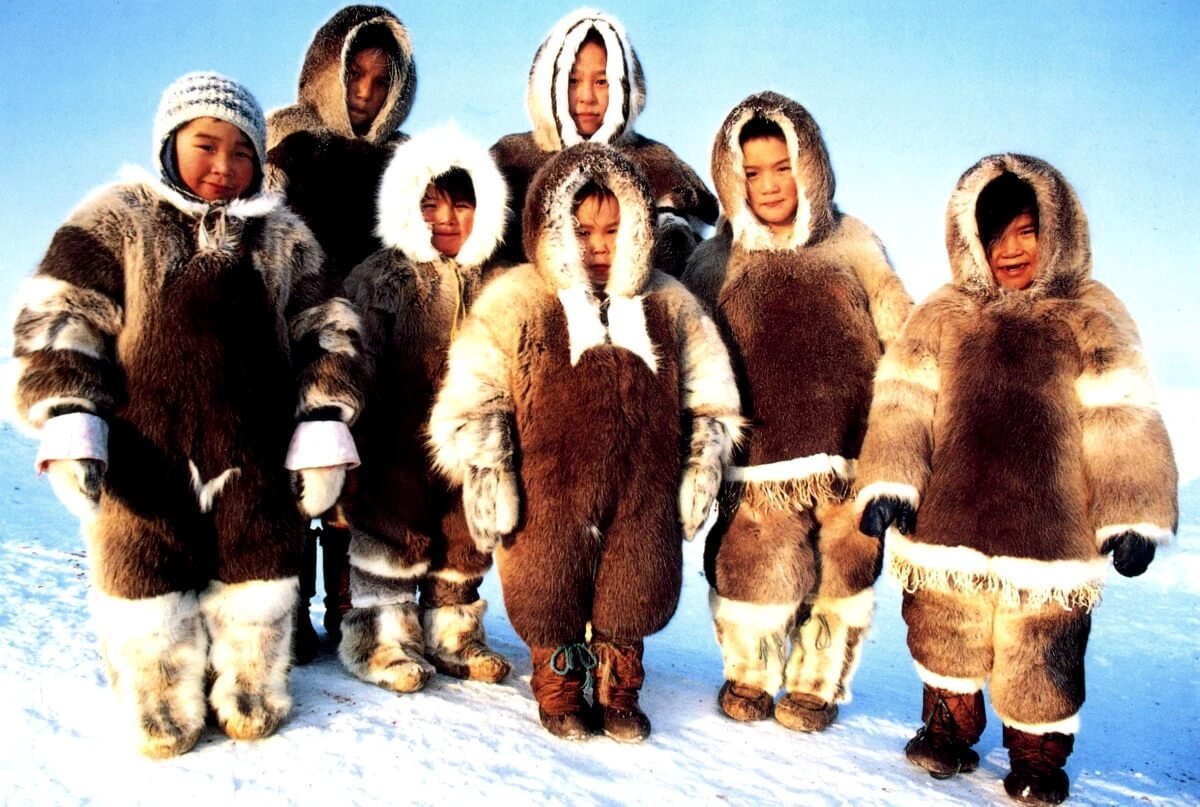Inuit (Arctic regions of Canada, Greenland, and Alaska) History, People, Culture, Facts : Inuit, indigenous people inhabiting the Arctic regions of Canada, Greenland, and Alaska, have a rich and fascinating history, culture, and way of life. This article explores the remarkable heritage, traditions, and interesting facts about the Inuit people, providing insights into their unique Arctic communities.
Inuit (Arctic regions of Canada, Greenland, and Alaska) History, People, Culture, Facts

Inuit (Arctic regions of Canada, Greenland, and Alaska) History, People, Culture, Facts
Let’s delve into the fascinating world of the Inuit people, exploring their history, people, culture, and some interesting facts.
Inuit (Arctic regions of Canada, Greenland, and Alaska) History:
The Inuit have a long and storied history, dating back thousands of years. They are believed to have migrated from Siberia across the Bering Strait to Alaska and eventually spread across the Arctic regions. Historically, the Inuit relied on hunting, fishing, and gathering for sustenance, using tools and techniques suited for survival in their challenging environment.
Inuit (Arctic regions of Canada, Greenland, and Alaska) People:
The Inuit population is made up of various distinct groups, each with its own dialect, traditions, and practices. In Canada, they are primarily known as Inuit, while in Greenland, they are called Kalaallit, and in Alaska, they are referred to as Iñupiat or Yupik. The Inuit people have a strong sense of community and kinship, valuing cooperation and sharing within their close-knit groups.
Inuit (Arctic regions of Canada, Greenland, and Alaska) Culture:
Inuit culture is rich and diverse, shaped by their Arctic surroundings. They have a profound respect for nature and an intimate understanding of the land, ice, and wildlife. Inuit art, such as sculptures, prints, and textiles, showcases their creativity and craftsmanship, often depicting themes from nature and legends. Traditional activities like dog sledding, kayaking, and throat singing continue to be cherished cultural practices.
Inuit (Arctic regions of Canada, Greenland, and Alaska) Language:
The Inuit have their own distinct languages, which belong to the Eskimo-Aleut language family. Inuktitut is the most widely spoken language among the Inuit, with various dialects across different regions. Efforts are being made to preserve and revitalize these languages, recognizing their importance as a vehicle for cultural expression and identity.
Inuit (Arctic regions of Canada, Greenland, and Alaska) Survival in Harsh Conditions:
Living in one of the harshest environments on Earth, the Inuit developed remarkable survival skills. They constructed dome-shaped snow houses known as igloos, which provided shelter and insulation. Inuit clothing, including parkas, boots, and mittens made from animal skins, offered protection from extreme cold temperatures. Traditional hunting techniques, such as ice fishing and seal hunting, ensured their sustenance.
Inuit (Arctic regions of Canada, Greenland, and Alaska) Traditional Knowledge:
The Inuit possess a wealth of traditional knowledge passed down through generations. They have an intricate understanding of Arctic weather patterns, ice formations, animal behavior, and navigation techniques. This knowledge is crucial for survival and has proven invaluable in adapting to environmental changes.
Inuit (Arctic regions of Canada, Greenland, and Alaska) Challenges and Resilience:
The Inuit people have faced numerous challenges throughout history, including colonization, forced relocation, and the impact of modernization. These challenges have had significant social, cultural, and economic implications. However, the Inuit have demonstrated remarkable resilience, preserving their cultural heritage while adapting to the realities of the modern world.
Inuit (Arctic regions of Canada, Greenland, and Alaska) Contributions:
The Inuit have made substantial contributions to various fields, including art, literature, and activism. Inuit art is internationally renowned for its beauty and craftsmanship, while Inuit authors and storytellers have shared their narratives and cultural insights with the world. Inuit activists have been instrumental in advocating for indigenous rights, land claims, and environmental conservation.
Interesting Facts about Inuit (Arctic regions of Canada, Greenland, and Alaska)
- The term “Inuit” means “the people” in the Inuktitut language, which is spoken by many Inuit communities.
- The Inuit have adapted to the harsh Arctic environment by developing specialized tools and clothing made from animal skins, such as parkas, boots, and mittens.
- Inuit culture places a strong emphasis on oral storytelling as a means of preserving history, passing down knowledge, and entertaining communities.
- Throat singing is a traditional form of musical expression among Inuit women, involving vocal techniques that create unique rhythmic sounds.
- Traditional Inuit cuisine includes a variety of foods found in the Arctic, such as seal, whale, caribou, Arctic char, and wild berries.
- Inuit art is highly regarded worldwide, known for its intricate carvings, sculptures, and prints that often depict Arctic wildlife and cultural themes.
- Dog sledding has been an integral part of Inuit transportation for centuries, providing a reliable means of travel across frozen landscapes.
- The Inuit have a strong spiritual connection to nature, believing in the existence of supernatural beings and spirits that govern the natural world.
- Inuit communities organize cultural festivals, known as “Nunavut Day” in Canada, where traditional activities, games, and celebrations take place.
- In 1970, the Canadian government established Nunavut, a territory in Canada’s Arctic, to recognize and protect the rights and culture of the Inuit people.
Today, the Inuit people continue to navigate the complexities of maintaining their cultural identity while engaging with the modern world. Their history, people, and culture offer a captivating glimpse into a unique way of life shaped by the Arctic’s awe-inspiring landscapes. By celebrating and learning from the Inuit, we can foster a deeper appreciation for the diverse cultures that enrich our global tapestry.
